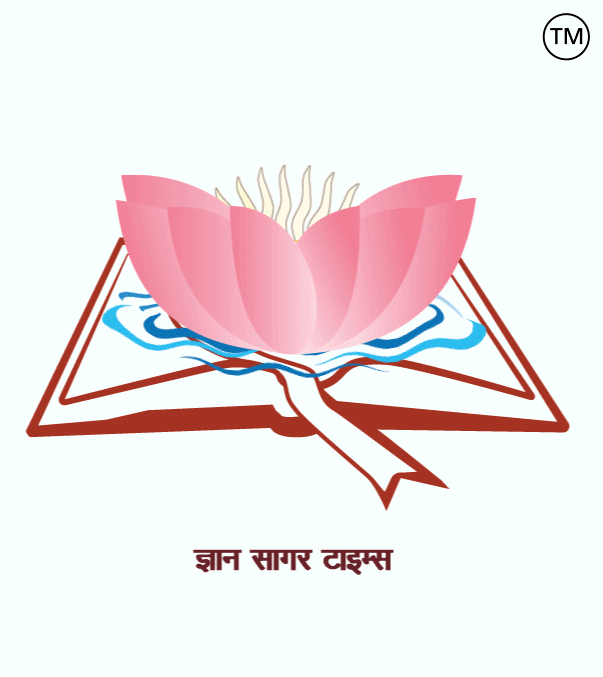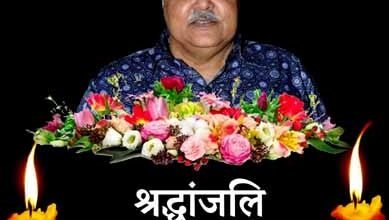
कहानियों व गानों का दौर: बॉलीवुड
बॉलीवुड की कहानियों और गानों का दौर भारतीय समाज और संस्कृति का दर्पण रहा है. भारतीय सिनेमा जो अपनी कहानियों और संगीत के अनूठे मिश्रण के लिए विश्व भर में विख्यात है. यह केवल मनोरंजन नहीं, बल्कि भाषा, विचार और भावनाओं को जोड़ने वाला माध्यम भी है.
बॉलीवुड की फिल्में हमेशा से ही अपनी मजबूत और भावनात्मक कहानियों के लिए जानी जाती रही हैं. वर्ष 1940-60 के दौर में कहानियाँ अक्सर सामाजिक यथार्थ और देश-प्रेम पर केंद्रित होती थीं. विमल रॉय की दो बीघा ज़मीन या राज कपूर की आवारा जैसी फिल्मों ने आम आदमी के संघर्ष और सामाजिक न्याय के मुद्दों को प्रभावी ढंग से उठाया। इन कहानियों में आदर्शवाद, नैतिकता और भावनाओं की गहराई देखने को मिलती थी.
वर्ष 1970- 80 के दशक में कहानी का केंद्र सामाजिक विद्रोह और भ्रष्टाचार के खिलाफ आक्रोश बन गया.अमिताभ बच्चन द्वारा अभिनीत “एंग्री यंग मैन” की छवि ने तत्कालीन युवाओं की निराशा और व्यवस्था के प्रति असंतोष को व्यक्त किया। वहीँ, कहानियों में एक्शन और प्रतिशोध का तत्व हावी रहा. वर्ष 1990 के दशक में रोमांटिक और पारिवारिक कहानियों का पुनरुत्थान हुआ. करण जौहर और यश चोपड़ा जैसे निर्देशकों ने भव्य सेट, विदेश में शूटिंग और प्रेम त्रिकोण के साथ पारिवारिक मूल्यों को मिलाकर एक नए तरह के सिनेमा को जन्म दिया, जिसने एक पीढ़ी को प्रभावित किया. वर्तमान समय के दौर में बॉलीवुड की कहानियों में जबरदस्त विविधता आई है. बायोपिक्स, सामाजिक मुद्दे (जैसे पैडमैन, आर्टिकल 15), थ्रिलर, और छोटे शहरों की कहानियों (जैसे बरेली की बर्फी) को दर्शक पसंद कर रहे हैं. कहानी अब सिर्फ भव्यता नहीं, बल्कि विश्वसनीयता और मौलिकता पर ज़ोर देती है.
भारतीय फिल्मों को विश्व सिनेमा से अलग करने वाला सबसे महत्वपूर्ण तत्व उनका संगीत है. हमारे यहाँ, संगीत सिर्फ मनोरंजन नहीं, बल्कि कहानी कहने का एक अभिन्न अंग है. वर्ष 1940-70 का दौर भारतीय फिल्म संगीत का स्वर्णकाल माना जाता है. शैलेंद्र, साहिर लुधियानवी, मजरूह सुल्तानपुरी जैसे गीतकारों और एस.डी. बर्मन, नौशाद, शंकर-जयकिशन जैसे संगीतकारों ने ऐसे सदाबहार गाने दिए जो आज भी सुने जाते हैं. इन गीतों के बोल काव्यात्मक, गहरे और कहानी के भावों को आगे बढ़ाने वाले होते थे. जैसे – आलम आरा का गाना “दे दे खुदा के नाम पे बन्दे”, “प्यार हुआ इकरार हुआ”.
वर्ष 1980-90 के दशक में सिनेमा तेज़ी से व्यावसायिक होता गया, गीतों का फोकस कहानी की गहराई से हटकर तेज़ धुन और नृत्य पर केंद्रित होने लगा. संगीत आज़ाद और ज़बरदस्त हो गया, भले ही उसके बोलों में उतनी गहराई न रही हो. वर्ष 2000 से अबतक संगीत में फ्यूजन और इलेक्ट्रॉनिक बीट्स का बोलबाला है. साथ ही, पुराने हिट गानों को नए अंदाज़ में रीमिक्स करने का चलन भी बढ़ा है. आज का संगीत तेज़ी से वायरल होता है और अक्सर फिल्म की रिलीज़ से पहले ही उसका प्रचार शुरू कर देता है.
वो एक दौर था जब बॉलीवुड में कहानी और गाने हमेशा एक-दूसरे से जुड़े थे. जब पात्र अपने शब्दों में भावनाओं को व्यक्त नहीं कर पाते, तो गाना उनकी भावनाओं को दर्शकों तक पहुँचाता है (जैसे उदासी, प्रेम या गुस्सा). वहीँ, गाने अक्सर दृश्यों के बीच एक पुल का काम करते हैं, जो कहानी को एक दृश्य से दूसरे दृश्य या समय में आगे बढ़ाते हैं. कई फिल्में अपने गीतों के कारण ही दशकों तक याद रखी जाती हैं। गाना फिल्म की कहानी की एक पहचान बन जाता है.
वर्तमान समय के बॉलीवुड में कहानी पर ध्यान कम होकर केवल बॉक्स ऑफिस और भव्य दृश्यों पर केंद्रित हो गया है. कई फिल्में बिना किसी ठोस कहानी के सिर्फ गानों और सितारों के दम पर चलती हैं. वहीं, संगीत में भी मौलिकता की कमी और रीमिक्स की भरमार एक चिंता का विषय है. हालांकि, ओटीटी प्लेटफॉर्म के उदय ने नए और साहसिक विषयों को मौका दिया है, जिससे कहानियों की गुणवत्ता में सुधार की उम्मीद बढ़ी है.
बॉलीवुड की कहानियाँ और गाने भारतीय समाज की धड़कन हैं. वे समय के साथ बदलते रहे हैं कभी पौराणिक, कभी सामाजिक, कभी आधुनिक. गानों ने भाषा और भावनाओं को जोड़ने का काम किया, जबकि कहानियों ने समाज की आत्मा को परखा है.
========== ========= ===========
The Era of Stories and Songs: Bollywood

The era of Bollywood stories and songs has been a mirror of Indian society and culture. Indian cinema, renowned worldwide for its unique blend of stories and music, is not only a medium of entertainment but also a medium that connects language, ideas, and emotions.
Bollywood films have always been known for their strong and emotional stories. During the 1940s and 1960s, stories often focused on social realities and patriotism. Films like Bimal Roy’s Do Bigha Zameen or Raj Kapoor’s Awara effectively addressed the struggles of the common man and issues of social justice. These stories reflected idealism, morality, and depth of emotion.
In the 1970s and 1980s, stories centered on social rebellion and outrage against corruption. The image of the “angry young man” portrayed by Amitabh Bachchan expressed the frustration and dissatisfaction of the youth of the time with the system. At the same time, elements of action and revenge dominated the stories. The 1990s saw a resurgence of romantic and family stories. Directors like Karan Johar and Yash Chopra, combining family values with lavish sets, foreign shooting, and love triangles, gave birth to a new kind of cinema that influenced a generation. In the current era, Bollywood stories have become incredibly diverse. Audiences are appealing to biopics, social issues (such as Padman, Article 15), thrillers, and small-town stories (such as Bareilly Ki Barfi). Storytelling now emphasizes authenticity and originality, not just grandeur.
The most important element that distinguishes Indian films from world cinema is their music. Here, music is not just entertainment, but an integral part of storytelling. The period from 1940 to 1970 is considered the golden age of Indian film music. Lyricists like Shailendra, Sahir Ludhianvi, and Majrooh Sultanpuri, and composers like S.D. Burman, Naushad, and Shankar-Jaikishan, created timeless songs that are still heard today. The lyrics were poetic, profound, and conveyed the story’s essence. For example, “De De Khuda Ke Naam Pe Bande” from Alam Ara and “Pyaar Hua Ikraar Hua”.
In the 1980s and 1990s, cinema became increasingly commercial, shifting the focus of songs from storytelling to fast-paced beats and dance. Music became free and powerful, even if its lyrics lacked depth. Since 2000, fusion and electronic beats have dominated music. Furthermore, the trend of remixing old hit songs in new styles has also increased. Today’s music quickly goes viral and often promotes a film even before its release.
There was a time when story and song were always intertwined in Bollywood. When characters couldn’t express emotions verbally, songs conveyed their feelings (such as sadness, love, or anger) to the audience. Furthermore, songs often served as a bridge between scenes, moving the story forward from one scene to another or across time. Many films are remembered for decades because of their songs. The songs become the hallmark of the film’s story.
In contemporary Bollywood, the focus on storytelling has diminished, shifting to box office success and spectacular visuals. Many films, without a solid story, thrive solely on songs and stars. The lack of originality in music and the abundance of remixes are also a concern. However, the rise of OTT platforms has opened up opportunities for new and bold subjects, raising hopes for improved story quality.
Bollywood stories and songs are the heartbeat of Indian society. They have evolved over time, sometimes mythological, sometimes social, and sometimes modern. Songs have served to connect language and emotions, while stories have examined the soul of society.





